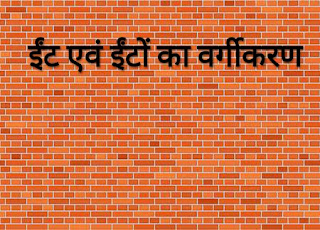SPACE IN ARCHITECTURE
Written by - Monu Dalal
What is Space in Architecture :-
"First we shape our buildings and, afterwards our buildings shape us." - Winston C.
The basic element of architecture may be defined as a part of building we move through and experience. It is the air between objects and nothingness. Space in anywhere, both in or outside of building formed by all elements wheather manmade or not. Space can be created by form, colour, geometry, height etc. it could be exterior or interior.
Nature of Space :- Everyone is inspired by its surrounding environment and space grabbed that surrounding. Nature of space is that it creates a type of space that gives quality of life. It also defines the value architecture. Nature of space is also defined by light, colour, height etc. For example - a touch of green space in any room can provide an endless variable of nature. Bringing together all the things in a single space can create a great experience.
Space creation :-
Light plays an important role in creating a space. Any space can be maximize by giving light to passes through a structure, along with adding windows, doors, skylights etc.
Architectural Spaces :-
The primary function of architecture is shaping of usable space. Their are many types of these spaces are -
1. Positive space - the space conceived as a void and built positively in a building.
2. Negative Space - this space is simply left over after the construction.
3. Entry space - These are the emphasis point of a building or site, and their unique formation create a focal point of attraction.
4. Seating space - These are the public spaces allows opportunities to relax on a street, park etc. Seating space increases the life of public space and health. In simple words seating spaces are positive spaces.
5. Directional Space - it may be defined as a path through a building, for e.g. a long corridor.
6. Non-directional space:-it defines through a variety of paths through e building.
7. Static space - these are the isolated spaces that have discrete, clearly understood functions.
8. Physical space - it is the volume of a room bounded by the walls, floor and roof.
9. Perceptual space - space that can be perceived, or seen for example glass walls and windows.
10. Behavioral space - it is space we actually move through and use, it can change but physical space can't changed.
11. Interwoven space - these are the fluid spaces or connected spaces that flow into one another.
These are the different architectural space with different behaviour. And there are also some more space that are defined orally are exterior space, interior space , conceptual space etc.
Elements defining spaces :-
There are two type of categories of elements defining spaces are -
(a) Horizontal elements defining space - these are derived horizontal in a plane are base plane, elevated base plane, depressed base plane, overhead plane.
(b) Vertical elements defining space - spaces defined vertically are - vertical linear element, single vertical plane, L shaped plane, parallel planes, U shaped plane, four planes.
"Architectural Sense defines the spaces." - Monu Dalal




Thank you
ReplyDelete